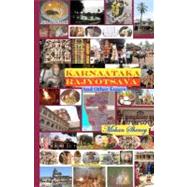Karnaataka Rajyotsava and Other Essays
, by Shenoy, Mohan G., M.d.- ISBN: 9781461148746 | 146114874X
- Cover: Paperback
- Copyright: 6/18/2011
This book contains quite a bit of history of the region now known as Karnaataka in this book. I have made honest efforts not to state anything that is not factual, but history being so difficult to be uniform, I can not say that everything in this book is just as it happened in the past. Language is only one of the tools that can be used in unifying people. But if the mother tongue of the people is not the same as that which is recognized as the OL, then there could be clashes. Imposition of Kannada by the Kannada enthusiasts upon the linguistic minorities in the state could be resented and might lead to adverse developments for the language. Like they say, "language is not everything". Language is certainly required for communication but taking love for it to extremes is counter-productive. According to the 1971 census, there were 66% Kannada speaking people in Karnaataka. Among the rest, 9% were speaking Urdu, 8% speaking Telugu, 4% speaking Marathi, 3.5% speaking Tulu, 3.45% speaking Tamil, 2% speaking Konkani, 1.4% speaking Malayalam, 1.2% speaking Lamani, 0.44% speaking Hindi and 0.24% speaking Kodava. The remaining people spoke one or other of 155 mother tongues other than those mentioned. Therefore 34% of the population had a mother tongue that was not Kannada. They would not like their mother tongue to die under the onslaught of the Kannada linguistic policies.When India gained Independence in 1947, the Kannada-speaking people had been scattered in different political regions. There was Mysore Kingdom ruled by the Maharajah of Mysore. The old districts of Mysore, Bangalore, Mandya, Hasan, Tumkur, Kolar, Kadur, Chitradurga, and Shimoga formed the Mysore Kingdom. In 1784 after the Mangalore treaty with Tippu Sultan, East India Company gained vast areas north of the princely state of Travancore-Cochin. The idea of any linguistic state was struck at the time of division of Bengal into two by the British in 1905 to break the back of a united Bengali people. The division was done on the basis of religious majority. The east was predominantly Muslim. However the people in the rest of India took upon themselves to deny the Muslims of Bengal a separate state. Everyone demanded states to be designed on the basis of language and not on religion.







